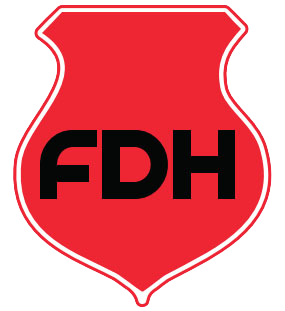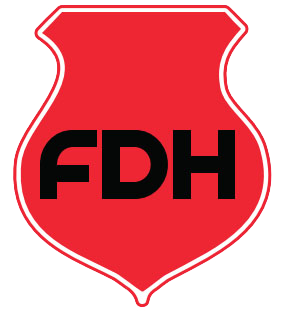A Guide to French Food and Wine Pairing
The French are known worldwide for their delicious wine and mouthwatering cuisine separately, but no other country in the world benefits from pairing the two as much as France does.
Let us guide you through the art of balancing the flavors and ingredients together to form a dining experience which can only be described as phenomenal.
What is Food-Wine Pairing?
The pairing of wine (French or otherwise) and food is essentially a matching of the two to arouse pleasure in a dining experience.
There are certain rules and recommendations that some experts have concocted but everyone has a different palate so don’t expect the same combinations to work for you.
How To Pair French Wine and Food
If you are having difficulty pairing French wine with the right food, there is one rule which can guide you in the right direction:
● Red wine works best with meat, while white wine is better paired with seafood and poultry.
Some wine experts have broken down the rules even further:
- ● Avoid fish, raw vegetables and goat cheese with dry red wines.
- ● Avoid desserts, Foie Gras and very strong cheeses with Loire Cabernet, pink wine or a crisp white.
That doesn’t mean you have to stick to the rules.
Dining should be fun so don’t be afraid to experiment with new food wine combinations.
Everybody will have their own interpretations of what is a good pairing.
How to Taste the Perfect Food-Wine Pairing?
To truly know if a food-wine pairing works well, you need to taste it.
- 1. Chew a piece of food.
- 2. Take a sip of the wine while the food is still in your mouth.
You will know if you have the perfect pairing if the combined taste of the food and wine is better than either of them singularly.
Basic Wine and Food Pairings
Some experts will tell you that the key to a good wine and food pairing is simplicity.
That is pairing a glass of wine with the simplest of dishes.
Here are some examples of simple food pairings:
Foie gras: a sweet white wine of champagne works best.
Oysters: Muscadet is a classic accompanying wine.
Fish or poultry served in a sauce: a dry white wine is ideal.
Red wine: choose a hearty Bourgogne red wine.
Cheese: red wine works best with string cheeses. Pick a dry, fruity white wine if eating goat’s cheese.
More Complicated Food-Wine Pairings
For those a bit more advanced in their French wine and food, these pairings are recommended:
Chocolate: chocolate and wine may seem like a simple pairing but it can be difficult to find matching flavours. Chocolate can be slightly bitter and acidic and this can often overpower the wine. The best solution is to opt for a port wine.
Eggs: eggs tend to clash with the best of wines but Pinot Blanc has been found to work rather well.
Smoked foods: a smoky flavour and an acidic wine work excellently together.
Cheese and Wine Pairings
French wine and cheese together as a meal or snack is probably one of the most famous combinations in the world.
There have even been books written with guidelines for the best pairings! As mentioned before, every palate is different and what works for others may not work for you but if you are new to the game, here are some of the most popular pairings:
Brie de Meaux: pair with a red Bordeaux or Prosecco.
Camembert de Normandie: pair with Pinot Noir (red) of Chenin Blanc (white).
Fourme d’Ambert: pair with a local red from the Auvergne region of a white Sauvignon Blanc.
Roquefort: pair with a robust red wine.
General Food-Wine Pairing Tips
Not all food-pairings need to be as precise as those mentioned above. These tips will assist you in coming up with your own combinations:
- ● If eating a dish with a sauce, pair the wine to the sauce rather than the meat, poultry, etc.
- ● Acidic foods, such as citrus fruits, are best paired with an acidic white wine
- ● Wines with a more fruity hue work best with sweet dishes.
- ● Tannic wines are best complemented by high-fat dishes, such as those with string cheese or meat.
- ● Rich foods are best served with rich or acidic wines.
What Other Ways Are There to Pair Food and Wine?
Weight and Texture
To provide a good balance between your food and wine, match the texture of the food with the heaviness of the wine.
If the balance is off somehow, they won’t blend together so well and you will find that either the food or the wine is overpowering the other.
Color Depth
The color depth of both the food and the wine can be important as it is directly related to the intensity of the flavor.
Therefore, most wine experts would recommend pairing a light colored wine with a light colored food, and dark wine with dark food.
Oak Flavors and Food’s Browness
Some wines can have an oak flavour because they were aged in wooden barrels.
You will find that this oak flavour is similar to the flavor one gets when caramelising food.
Therefore, if you have an oak-based wine, it is recommended that you pair it with food that has been baked, grilled, poached, etc…to a brown color.
Exceptions
- ● Avoid pairing a spicy wine with Asian food as the combination of the two can lead to a burning sensation.
- ● Likewise, it is best not to match a peppery wine to a spicy dish or the same burning sensation might occur.
Has this article caught your interest and would you now like to sample some food-wine pairings of your own?
—> Then make an instant purchase at our online store!

